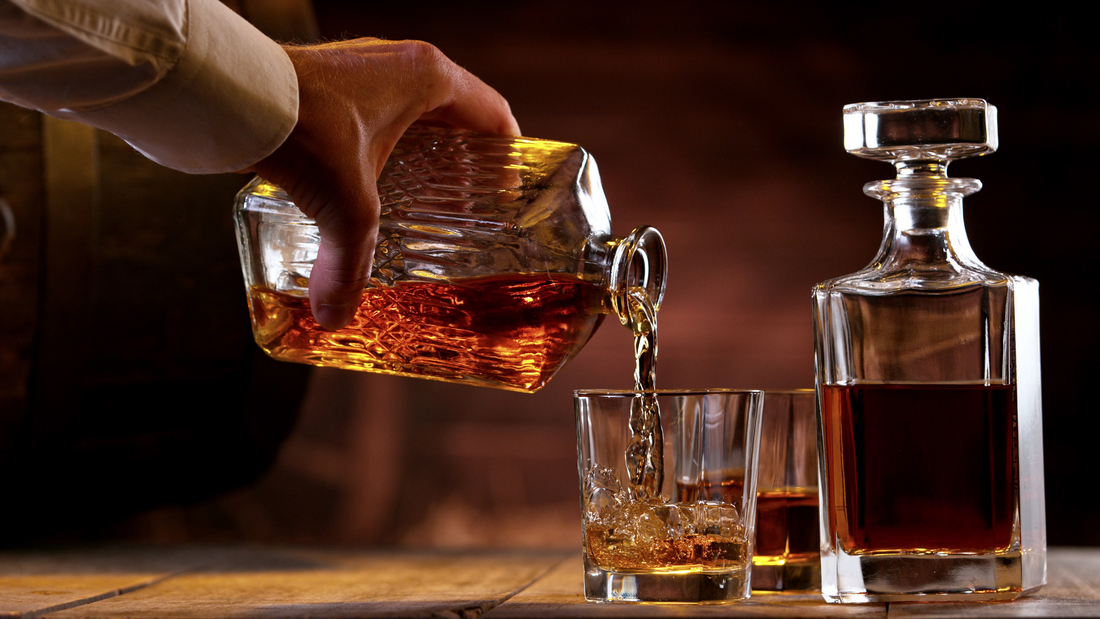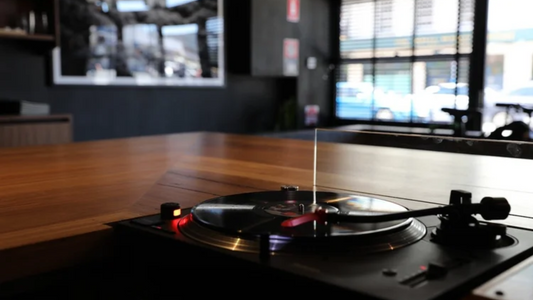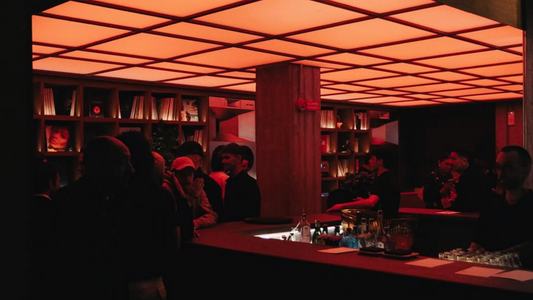
The Pour: Ritual, Timing, and the Sound of Whisky
By Rafi Mercer
The pour is a moment most people overlook. You tilt the bottle, the liquid falls, the glass fills. Functional. Simple. But in the bars that treat drinking as ritual — especially listening bars in Japan — the pour is everything. It is theatre. It is timing. It sets the mood as surely as the first note of a record.
I’ve watched bartenders make a pour feel like ceremony. The way they hold the bottle with both hands, the angle measured, the pace steady. The sound of the spirit leaving the neck — not glugging, not rushing, but flowing cleanly into the glass. The pause, the stop, the silence that follows. All of it deliberate. You realise, as you watch, that the pour is not simply about filling a glass. It’s about shaping time.
“For relaxing times, make it Suntory time.” The line, delivered with weary charm by Bill Murray in Lost in Translation, has become iconic. But the truth behind it still holds: the pour is about relaxation, about slowing down. It creates a space between what you were doing and what you are about to do. The moment of liquid meeting glass becomes a hinge — before the sip, before the conversation, before the record spins.
When you start to notice it, you hear the pour differently too. The first splash against ice, the soft crack as spirit meets cube, the rising pitch as the glass fills. It’s music in miniature, a prelude to the drink itself. In a quiet bar, you catch every sound — just as you do when a stylus lowers into the groove. Both signal the start of something intentional.
At home, I’ve learned to respect the pour. I’m not yet at the level of Japanese bartenders, with their perfect angles and flawless control. I need time to master it. But I know enough to slow down. To hold the bottle with care, to notice the way the whisky flows, to listen to the small details. When I get it right, the whole drink changes. It feels earned. It feels considered.
And the pour is not only about aesthetics. It affects the experience itself. Too much and the balance is gone. Too little and the weight of the glass feels wrong. A single measure lets the whisky breathe; a double warms the hand as the glass rests between sips. The volume, the pace, the restraint — all of it matters.
I’ve come to think of the pour as the third element in the trinity: ice, glass, and spirit. Each one shapes the ritual. Ice sets the tempo, glass frames the experience, and the pour begins the story. Without it, there is no arc, no sense of flow. With it, you enter the moment.
The best pours, like the best records, are never hurried. They respect silence, they respect space. They let you savour not just the drink, but the act of beginning. That’s why bartenders in Tokyo listening bars make such theatre of it — because they understand that drinking, like listening, is an art of attention.
So next time you tilt the bottle, don’t treat it as background. Treat it as foreground. Slow the movement, notice the sound, feel the weight of the moment. It is, in its way, your Suntory Time — a chance to step out of noise, to begin something with care.
And when you finally take that first sip, the drink will carry more than flavour. It will carry presence.
Rafi Mercer writes about the spaces where music matters. For more stories from Tracks & Tales, subscribe here, or click here to read more.






